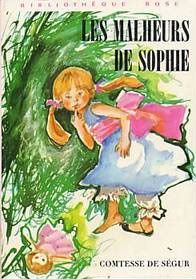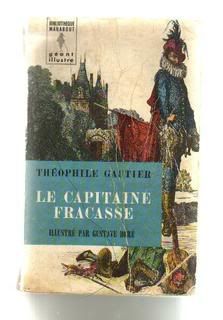The magic country of childhood reading
By Sophie Masson | March 16, 2009 |
 If I close my eyes, I can still see them, the books of my childhood, ranged in colourful rows on the shelves of memory. Because of my bilingual experience, the books that open in my mind’s eye are sometimes French, sometimes English; we jumped from one to the other in our reading as much as in our speech (though at home, English was lingua non grata when we spoke to our parents.)
If I close my eyes, I can still see them, the books of my childhood, ranged in colourful rows on the shelves of memory. Because of my bilingual experience, the books that open in my mind’s eye are sometimes French, sometimes English; we jumped from one to the other in our reading as much as in our speech (though at home, English was lingua non grata when we spoke to our parents.)
Look! Here is the battered, brightly-coloured cover of La Petite Histoire de France, with its helpful summaries: “Here we see the Gaulish leader Vercingetorix fighting bravely against the Romans. He was defeated by them at Alesia.” The illustration shows this famous example of nos ancetres les Gaulois, as the French still call their Gaulish ancestors: long blond hair flowing, thick blond moustache with pointed ends, dashing red cloak flung over his shoulder, seated on a rearing white horse. The very image of a desperate, a vanished pride, perhaps the very core of my slowly-developing fascination for all the Celtic peoples.
Over there is the Comtesse de Segur and the long-running series of her Dickensian-style novels for children, in the editions of La Bibliotheque Rose, with its pink spines and busy front covers. There were characters with our names–Sophie, Camille–in them, and I both loved and hated them with a great passion. They were so good, those girls, so pretty, and had such exciting adventures.
There was one book in particular, called Les Malheurs de Sophie (The Misfortunes of Sophie), and Dad loved to tease me about it. Oh dear, dear, it really is les malheurs de Sophie, he’d crow, as I whinged over some grave injustice done to me.
On another shelf, here are the folk and fairytales, the collections called Contes et Legendes (Tales and Legends) They were arranged by region, or country: there were French ones, from Languedoc, Provence, the Basque country, Champagne; there was a blue-jacketed Portuguese one, a red and gold Arabian Nights; and my favourite, a gigantic collection of Indian tales, from the Ramayana. What hours I spent over them and their illustrations–magic in two dimensions, almond eyes and gossamer veils, fierce moustaches and unexplained death and rebirth.
 And of course, fat and bursting with adventures, hours of thrilling reading, are the swashbuckling historical romances, a peculiarly French style: Alexandre Dumas’ The Three Musketeers, The Count of Monte Cristo, The Black Tulip, Jules Verne’s wonderful adventure set in Russia, Michel Strogoff, Theophile Gauthier’s magnificent novel of the theatre world and murderous intrigue, Le Capitaine Fracasse; Paul Feval’s romantic, huge panorama of the eighteenth century, Le Bossu.
And of course, fat and bursting with adventures, hours of thrilling reading, are the swashbuckling historical romances, a peculiarly French style: Alexandre Dumas’ The Three Musketeers, The Count of Monte Cristo, The Black Tulip, Jules Verne’s wonderful adventure set in Russia, Michel Strogoff, Theophile Gauthier’s magnificent novel of the theatre world and murderous intrigue, Le Capitaine Fracasse; Paul Feval’s romantic, huge panorama of the eighteenth century, Le Bossu.
These last two books were my top favourites for many years, and I still love them and reread them from time to time. Irresistible mixtures of adventure, romance, mystery; where danger and death, masked balls, mistaken identities, bands of gypsies, travelling players, financial skulduggery, and haunted castles all appeared as bit players: they were heady concoctions. They made me journey into a magic country of adventure and high drama which I hated leaving for the dull routines of school.
Papa frequently went to one of the big bookshops in Sydney, which had a good Foreign Languages section. He wanted us to keep reading books in French, so he kept presenting us with packages of classical nineteenth century authors, of the kind he loved. Dumas, Verne, Hugo, Daudet; we grew to love them. He also introduced us to Tintin, which he’d loved as a child; Asterix we found for ourselves, and read over and over again.
But I was also branching out into English books. I began to take books out from the school and public libraries, books I had to choose myself, since they were in English, from a tradition my parents didn’t know. Alice and the White Rabbit; the Moomintroll family; Pippi Longstocking; Rosemary Sutcliff’s historical characters, Leon Garfield’s rich panoply–they all became part of my mental furniture. I kept finding new ones, discarding old ones, having binges of one author or the other. Because my parents found it difficult to guide me in English-language children’s books, I chose randomly at first, free of any kind of judgment.
I devoured dozens of Famous Fives and Secret Sevens, wondering why I could never remember which ones I’d read. I loved anything which had magic and adventure, and turned away from books that looked too domestic. As I grew into adolescence, I sallied boldly into into all kinds of territory–Agatha Christie, the Russian novelists, Shakespeare, Dickens, Charlotte Bronte, Anya Seton, Alan Garner, Leon Garfield, Tolstoy, Conrad–all was grist to my ferocious mill.
Yes, that was an advantage, having parents who didn’t supervise too closely what you read. They trusted to our good judgment, to our innocence, perhaps. Maman did read a good deal of adult fiction in English, most of it modern and sometimes controversial, and she introduced us to writers like Anthony Burgess and Vladimir Nabokov. (Papa’s reading stayed resolutely 19th century and French, except in crime, where he preferred Christie to anybody).
In high school, as an eager-beaver reader, I turned out dozens of enthusiastic if naïve book reviews, filling the exercise book meant expressly for this purpose, long before I was meant to. I remember writing, in a review of Anna Karenina, “In this book, the characters show a lot of strong emotion. The Russian books I have read all have characters with strong emotions.” My English teacher wrote, in a red exclamation in the margin, “What about the French?” I was confused by that note, vaguely feeling it was some kind of reproof.









Ah, the power of stories to take us from the mundane to the fantastical world of the imagination! A wonderful overview of much-loved books, Sophie; it makes me wish I could read/speak French! Hopefully some of our contemporary novels will have the same power to excite readers in the future – that’s if books don’t become obsolete!